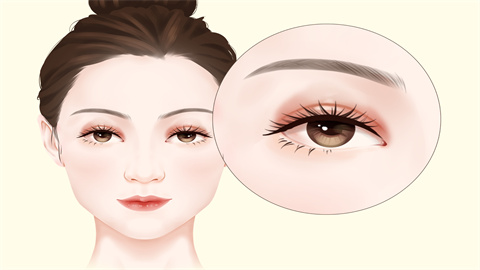What should I do if my eyes are uneven in size after double eyelid surgery?
Generally, after double eyelid surgery, the phenomenon of one eye appearing larger than the other may be related to differences in postoperative recovery, improper surgical design, ptosis (drooping) of the upper eyelid, eyelid muscle weakness, or facial nerve paralysis. Treatment options include general therapy, surgical intervention, and medication, under a doctor's guidance. It is recommended to choose qualified and experienced doctors and hospitals to ensure treatment safety. The detailed analysis is as follows:

1. Differences in Surgical Recovery
After double eyelid surgery, due to individual differences in physical condition and surgical trauma, the recovery speed of the left and right eyes may vary, which can lead to asymmetry in eye size. This is a normal physiological response following surgery and usually resolves gradually within 3–6 months post-operation, without requiring special treatment.
2. Improper Surgical Design
If preoperative design fails to accurately measure and assess the morphology and width of both eyelids, postoperative asymmetry may occur. Stimulating the meridians and acupoints around the eyes may help regulate muscle tension and improve asymmetry of the double eyelids.
3. Upper Eyelid Ptosis (Drooping)
Upper eyelid ptosis may be caused by congenital developmental abnormalities or acquired diseases. When the function of the muscle responsible for lifting the eyelid is partially or completely lost, it may cause one or both eyes to appear uneven in size. This may be accompanied by symptoms such as decreased vision or visual field defects. It is recommended to follow medical advice regarding the use of medications such as neostigmine methylsulfate injection, vitamin B1 tablets, or pyridostigmine bromide tablets for treatment.
4. Eyelid Muscle Weakness
Weakness of the eyelid muscles may be caused by autoimmune diseases such as myasthenia gravis, infections, or drug reactions. Eyelid muscle weakness may result in impaired neuromuscular transmission, leading to unequal eye size. It is often accompanied by symptoms such as double vision and impaired eye movement. Under medical guidance, drugs such as prednisone acetate tablets, azathioprine tablets, or neostigmine bromide tablets may be used for treatment.
5. Facial Nerve Paralysis
Facial nerve paralysis may be caused by genetic factors, trauma, or other reasons. It may lead to damage of the facial nerve, causing facial muscle paralysis, including paralysis of the eyelid muscles, which in turn causes one eye to appear larger than the other. It is usually accompanied by loss of facial expression, deviation of the mouth corner, drooling, and other symptoms. Under a doctor's guidance, medications such as acyclovir tablets, vitamin B12 injection, or dexamethasone tablets may be used for treatment.
After double eyelid surgery, it is recommended to follow medical instructions, pay attention to eye rest and recovery, and avoid strenuous activities and infections. At the same time, maintaining a healthy lifestyle and enhancing immunity can help prevent the occurrence of related diseases.







